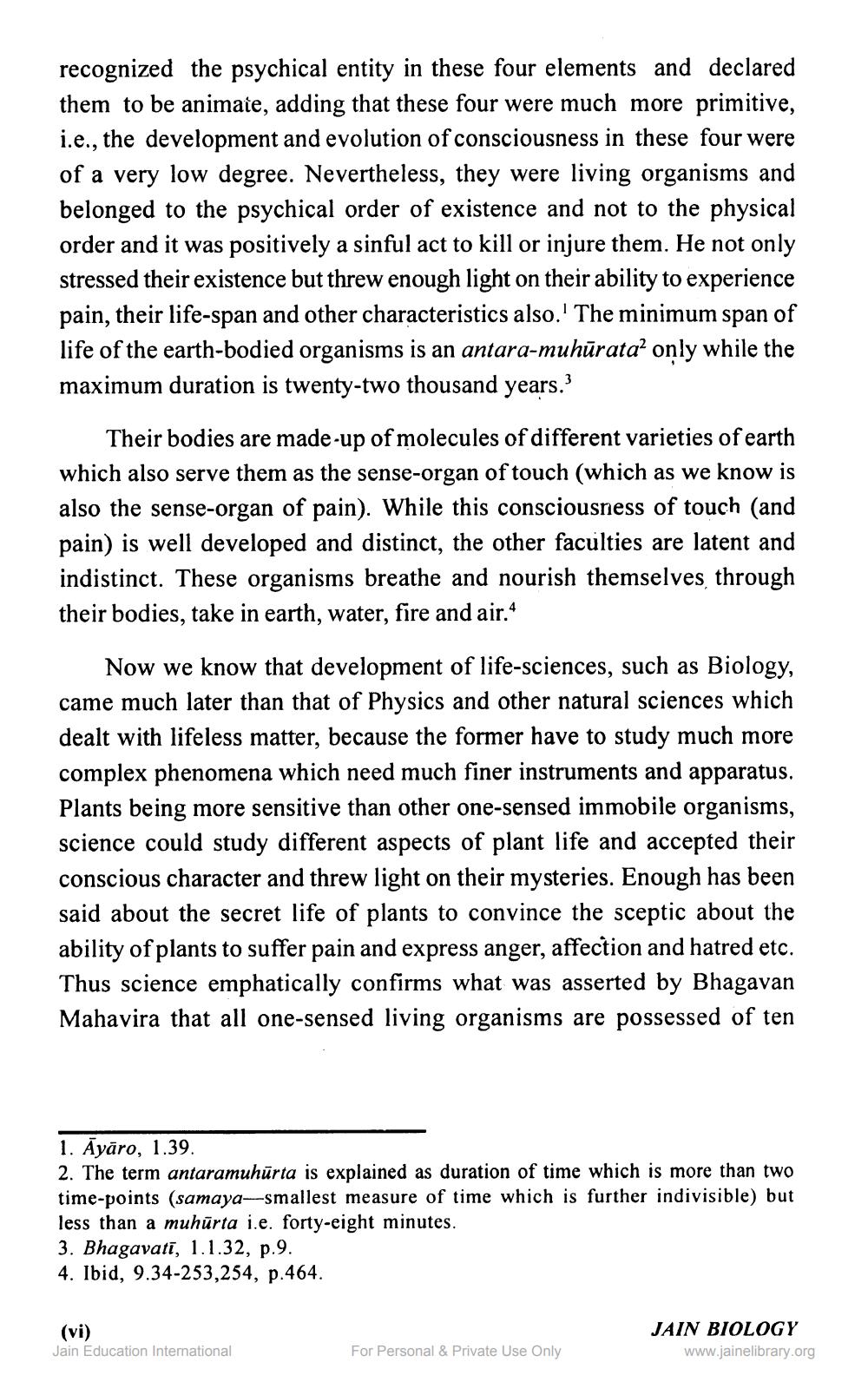Book Title: Jain Biology Author(s): Jethalal S Zaveri, Mahendramuni Publisher: Jain Vishva Bharati View full book textPage 7
________________ recognized the psychical entity in these four elements and declared them to be animate, adding that these four were much more primitive, i.e., the development and evolution of consciousness in these four were of a very low degree. Nevertheless, they were living organisms and belonged to the psychical order of existence and not to the physical order and it was positively a sinful act to kill or injure them. He not only stressed their existence but threw enough light on their ability to experience pain, their life-span and other characteristics also. The minimum span of life of the earth-bodied organisms is an antara-muhūrata’ only while the maximum duration is twenty-two thousand years.? Their bodies are made up of molecules of different varieties of earth which also serve them as the sense-organ of touch (which as we know is also the sense-organ of pain). While this consciousness of touch (and pain) is well developed and distinct, the other faculties are latent and indistinct. These organisms breathe and nourish themselves through their bodies, take in earth, water, fire and air. Now we know that development of life-sciences, such as Biology, came much later than that of Physics and other natural sciences which dealt with lifeless matter, because the former have to study much more complex phenomena which need much finer instruments and apparatus. Plants being more sensitive than other one-sensed immobile organisms, science could study different aspects of plant life and accepted their conscious character and threw light on their mysteries. Enough has been said about the secret life of plants to convince the sceptic about the ability of plants to suffer pain and express anger, affection and hatred etc. Thus science emphatically confirms what was asserted by Bhagavan Mahavira that all one-sensed living organisms are possessed of ten 1. Āyāro, 1.39. 2. The term antaramuhurta is explained as duration of time which is more than two time-points (samaya--smallest measure of time which is further indivisible) but less than a muhūrta i.e. forty-eight minutes. 3. Bhagavati, 1.1.32, p.9. 4. Ibid, 9.34-253,254, p.464. (vi) Jain Education International JAIN BIOLOGY www.jainelibrary.org For Personal & Private Use OnlyPage Navigation
1 ... 5 6 7 8 9 10 11 12 13 14 15 16 17 18 19 20 21 22 23 24 25 26 27 28 29 30 31 32 33 34 35 36 37 38 39 40 41 42 43 44 45 46 47 48 49 50 51 52 53 54 55 56 57 58 59 60 61 62 63 64 65 66 67 68 69 70 71 72 ... 152
